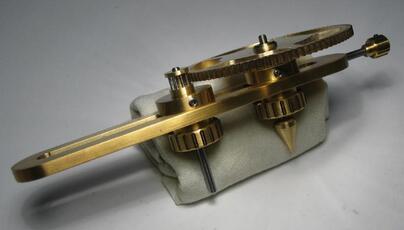- Joined
- Nov 14, 2016
- Messages
- 2,995
I don't know if we have any watchmaker / clockmakers on the forum, but I have a question if we do.
I'm curious about vintage watchmakers lathes. I recently got a book on small lathes and the various watchmakers lathes are covered in some detail, but the book was originally published in the 1950s when there were not many small lathes suitable for watchmaking other than these watchmakers lathes.
I see them on ebay selling for a few hundred to a few thousand dollars. I am assuming at least the higher end are collectors, old, often Swiss or German, built like a Swiss watch... yeah, I can imagine there is a collectors market for some of these.
I'm curious about the practical application, are these still the preferred choice for making parts for clocks and watches, or are they more in the realm of tradition, like photographers who use actual film, or glass plates?
There are many modern small lathes these days which can be set up to use watchmakers collets. I'm assuming these vintage lathes are no match for a $12,000 Levin but what about a Taig, Sherline or 7x Chinese lathe set up for watchmaking? I know Sherline has its fans among watchmakers, but I don't follow the other two closely enough to know how much they are used.
There was a Mr Pete video where he goes to the shop of a friend who restores old clocks. He is set up with a Sherline lathe and mill, which appear to be his primary machines but he also had a couple of vintage watchmakers lathes set up. They didn't go into the why's of his tool selection, so don't know if they were set up for specific functions, used for the most precise work or if the vintage lathes had sentimental attachment so he still uses them.
I'm curious about vintage watchmakers lathes. I recently got a book on small lathes and the various watchmakers lathes are covered in some detail, but the book was originally published in the 1950s when there were not many small lathes suitable for watchmaking other than these watchmakers lathes.
I see them on ebay selling for a few hundred to a few thousand dollars. I am assuming at least the higher end are collectors, old, often Swiss or German, built like a Swiss watch... yeah, I can imagine there is a collectors market for some of these.
I'm curious about the practical application, are these still the preferred choice for making parts for clocks and watches, or are they more in the realm of tradition, like photographers who use actual film, or glass plates?
There are many modern small lathes these days which can be set up to use watchmakers collets. I'm assuming these vintage lathes are no match for a $12,000 Levin but what about a Taig, Sherline or 7x Chinese lathe set up for watchmaking? I know Sherline has its fans among watchmakers, but I don't follow the other two closely enough to know how much they are used.
There was a Mr Pete video where he goes to the shop of a friend who restores old clocks. He is set up with a Sherline lathe and mill, which appear to be his primary machines but he also had a couple of vintage watchmakers lathes set up. They didn't go into the why's of his tool selection, so don't know if they were set up for specific functions, used for the most precise work or if the vintage lathes had sentimental attachment so he still uses them.



